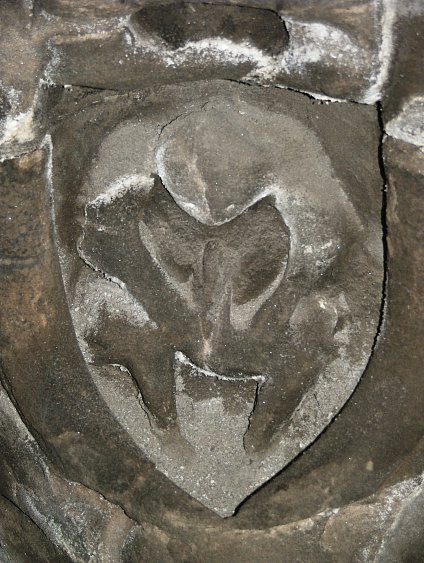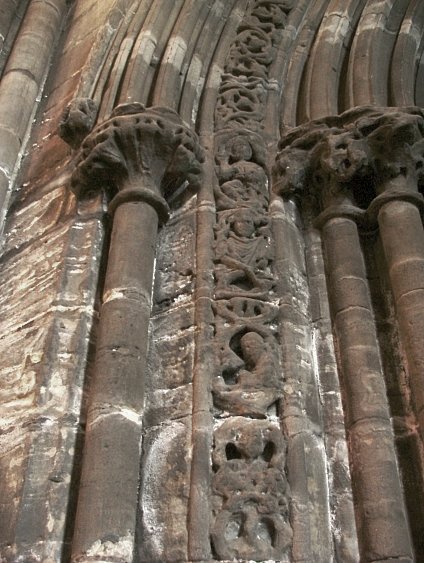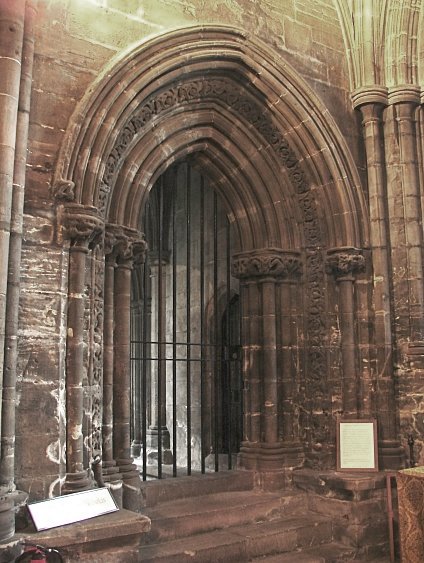
In their 1997 publication ‘An Illustrated Map of the Sheela na Gigs of Britain and Ireland‘ Jack Roberts and Joanne McMahon mention a Sheela in the crypt of Glasgow Cathedral:
‘A figure preserved in the crypt of Glasgow Cathedral was noted in 1894’.
Glasgow Cathedral has a history going back over 1600 years, when the site was first blessed for burials by St Ninian around 397 AD. Later in the 6th century, Kentigern popularly known as Mungo was selected as bishop by the King, and the people. St Mungo was born on the shore of Fife near Culross. He trained for the priesthood at Culross by St Serf. Later St Mungo founded a monastic community, in Glasgow, and built a cathedral. St Mungo died in 603AD. St Mungo’s Cathedral was destroyed or severely damaged by fire, and the older building was rebuilt, and dedicated in 1136. The Lower Church, which houses the figure, was created during the 12th century by Bishop William de Bondington (1233 – 1258). Further developments to this part of the Cathedral occurred during the 13th and 15th century, when the Blacader aisle of the Lower Church was added by Archbishop Blacadere (1483 – 1508).
The figure is located in the crypt, or Lower Church. In the far left-hand (northeast) corner of the Lower Church, is the doorway to St Nicholas Chapel. The figure is located on the bottom left of the frieze, which surrounds the doorway. The arch of the doorway is richly carved and for some reason very worn despite it being in the crypt. This wear is at odds with most of the other carving in the crypt which could mean that the door was originally an external one.
The Glasgow figure is very odd indeed, and difficult to say what it originally represents. The large triangular shaped head with a central groove sits on Herculean shoulders. Two powerful arms come to rest on the lower abdominal area, and the broad ill-defined legs are held in an open manner. The figure has a central ridge on the torso, running up from the pelvic area to the chest and two lower ridges either side.
Speculatively, the two lower ridges could represent, the vulva, while the large central ridge, a penis. To conclude could this figure represent a Sheela na Gig, a male phallic figure, a penis sucking hermaphrodite, or even a very worn minstrel figure playing some type of pipes?
Keith Jones and John Harding

